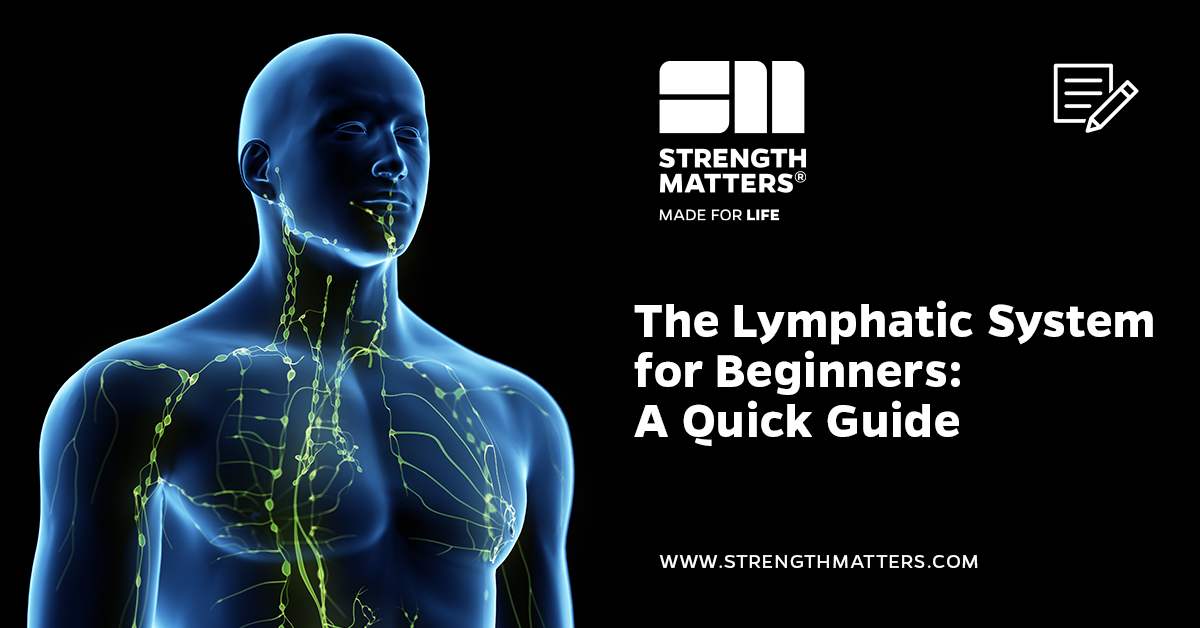What’s the most important system in the body you are probably not working, at least intentionally, that can help improve your cardiovascular training? That would be the lymphatic system.
The lymphatic system acts as the body’s primary filtration and waste manager. Its job is to help kill and eliminate toxins such as bacteria, viruses, cancer, parasites, fungi, and cellular and metabolic waste. When cells break down, even from normal wear and tear, they need to be eliminated from the body to make room for new, fresh ones.
If you can’t get rid of the old cells, you’ll struggle to make new ones and become toxic. A key player here is lymph, which transports white blood cells throughout the body to fight infections. Lymph feeds directly into your circulatory system via the veins. Once in the veins, it travels towards the heart and enters the arteries as blood plasma.
Think of the lymphatic system as your built-in septic system, responsible for detoxifying and purging unwanted things from the body. Sadly, the lymphatic system is rarely talked about or taken care of in health and fitness today.
Think about this: There are 15 liters of lymphatic fluid in the body and five liters of blood. Every day your body has to recycle these 20 liters of cellular fluid, also known as interstitial fluid. Seventeen liters go directly into the veins and three liters are cleared by the lymphatic system. That’s a lot of fluid. There are enough lymphatic vessels in the body to make several trips around the Earth.
Two things primarily move lymphatic fluids: Diaphragmatic breathing and movement. This is the moment where most people say, “But I’m already moving and breathing, shouldn’t my lymph system be OK?” Not necessarily. Unfortunately, fluids (water, blood, and lymph) in the body can become stagnant. Your lymphatic system may be overloaded and backed-up from years of neglect or from having so many toxins thrown at it at
once that it can’t keep up.
When fluid balance is compromised, it takes more pressure to move that fluid. To compensate, the body increases its blood pressure to push more volume and because there’s more fluid, the thickness of the fluid also increases. In order to move the thicker fluid, blood pressure further increases, which stresses the heart.
What does this mean for you? Slower recovery and less durability. Due to the increase in fluid volume, your body will struggle to deliver oxygen and nutrients into the cells making it far more difficult for you to go harder, faster, stronger, and longer. Cardiovascular output will suffer no matter how much you try to train it.
What Causes Lymphatic Stagnation?
Here are a few big ones:
Incessant stress. Occasional stress isn’t bad but unrelenting stress is. Overtraining is a form of incessant stress – you need time to rest and recover. Stress tightens tissue and tight tissue doesn’t accept fluid flow well. This often causes Tension Myoneural Syndrome, or muscle (myo) and nerve (neural) pain.
Not moving enough. When the body is stagnant from inactivity, its fluid also becomes stagnant.
Doing the same type of movement all the time. The tissues in your body adapt to the stress you apply to it. If you do the same type of movements all the time, you alter tissue structures that can influence how underlying fluids flow or don’t flow in your body.
Not breathing through the diaphragm. The diaphragm is a dome-shaped muscle in your ribcage that controls internal pressure. When you breathe through the diaphragm, your body pumps fluid more efficiently. Not breathing through the diaphragm regularly can cause poor circulation.
What Can You Do to Help Lymph Flow?
Breathe more via your diaphragm. Breathing in and out through your nose automatically engages the diaphragm. Concentrate on expanding your belly, sides of the ribcage, and back of the ribcage. Like inflating a balloon. This will create intra-abdominal pressure that will move fluid and decrease stress and tension in the body.
Do for 4Motion: Move more of yourself. More often. More ways. More environments. The key is variation, variability, and variety. One of my favorites is simply rising from the floor. Sit or lay down on the ground and get back up as many different ways as you can, up to 50
times a day.
Stimulate your body: There are five areas in the body, listed below, that are supposed to have the most mobility but also suffer from a lot of stiffness and tightness. What you need to do is gently slap these areas 10 times with the palm of your hand daily, then jump up and down on the balls of your feet like you are jumping rope for 20 seconds. This will increase blood flow and lymph flow throughout the body:
- Above the collarbone
- Shoulder joint
- Abdomen
- The hip joint, groin region
- Behind the knee
Conclusion
These aren’t complicated solutions. Introducing these three strategies can make a significant and profound change in your health, training, recovery, and overall resilience as a human being. Once you understand how the systems of the body work together, you can go a long way to feeling better. Remember, no system in the body ever works alone. Never gets injured alone. Never heals alone. Working with the lymphatic system is the first step. Have fun with it! If you want more information about the lymphatic system, just visit StopChasingPain.com and see our intensive self-help series Body Aquarium: Lymphatic Mojo.
What is the Lymphatic System?
The lymphatic system acts as the body’s primary filtration and waste manager. Its job is to help kill and eliminate toxins such as bacteria, viruses, cancer, parasites, fungi, and cellular and metabolic waste.
Summary

Article Name
The Lymphatic System for Beginners: A Quick Guide
Description
What’s the most important system that can help improve your cardiovascular training? That would be the lymphatic system. Let us explain…
Author
Perry Nickelston
Publisher Name
Strength Matters
Publisher Logo

